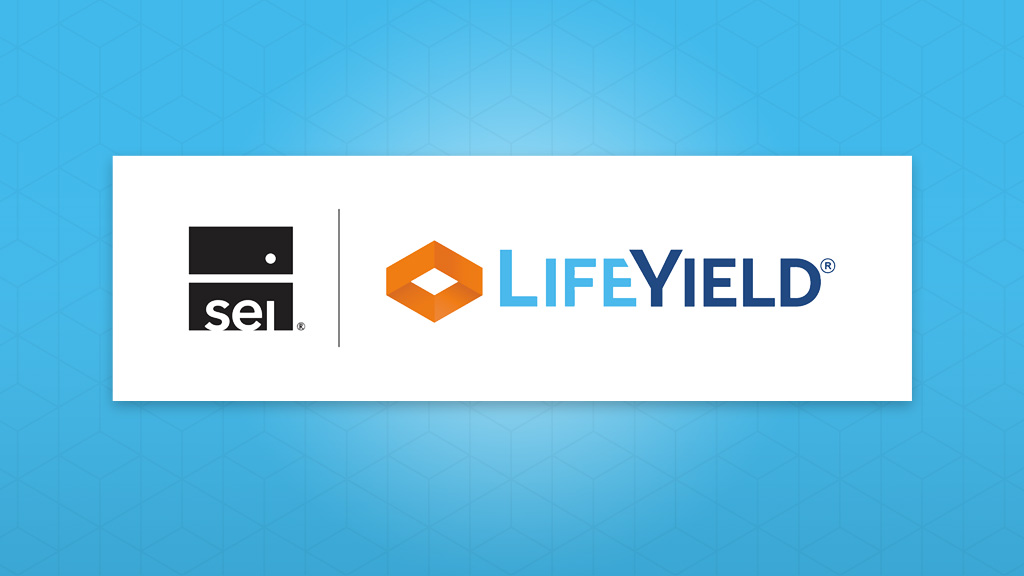How to Evaluate a Multi-Account Portfolio Rebalancing Tool

Rebalancing is a crucial aspect of managing investment portfolios, ensuring that the allocation of assets remains aligned with the desired risk and return objectives. The importance of rebalancing lies in its ability to maintain a disciplined investment approach, mitigating the impact of market volatility on a portfolio’s asset mix.
Traditional rebalancing occurs on each account individually. Each account typically has the same target asset allocation, and rebalancing aims to bring accounts that have fallen out of alignment back to the initial target. However, since each investment account has the same asset mix, advisors and investors are not leveraging the tax advantages of each account type and are, as a result, leaving money on the table.
LifeYield has solutions for advisors to efficiently rebalance a client’s household assets across multiple accounts and multiple account types. With our sophisticated technology and comprehensive features, LifeYield aims to personalize the rebalancing process to each client while maximizing tax efficiency and overall portfolio performance.
LifeYield: The Ultimate Multi-Account Portfolio Rebalancing Tool
LifeYield tax-smart technology includes a multi-account portfolio rebalancing engine that enables users to efficiently manage and optimize their investment portfolios.
This innovative solution provides firms and advisors with the means to effectively rebalance their client’s portfolios at the household level, across account types, ensuring they align with their client’s desired asset allocation and that asset location is being addressed. Using sophisticated algorithms, LifeYield analyzes various factors such as risk tolerance, tax efficiency, and investment objectives to recommend optimal portfolio adjustments.
Multi-account portfolio rebalancing allows advisors to automatically adjust the weights of different assets within their portfolios, maintaining a proper balance among stocks, bonds, and other investments, while optimizing household portfolio tax efficiency. This approach not only simplifies the process of portfolio management for advisors by providing a consistent methodology for rebalancing across all client portfolios, but it also helps investors minimize risk, create tax alpha, and maximize returns by regularly monitoring and adjusting their holdings.
Benefits and the Importance of Rebalancing
Tax-efficient portfolio management is an important benefit of rebalancing. By regularly rebalancing a portfolio, investors can minimize tax liabilities by taking advantage of tax-loss harvesting strategies and optimizing their asset allocation in a way that aligns with their tax situation.
Additionally, rebalancing helps manage risk by maintaining the desired level of diversification and reducing exposure to overvalued or underperforming assets.
Lastly, target allocation with rebalancing ensures that the portfolio stays aligned with the investor’s long-term goals and investment strategy, helping to maintain discipline and avoid emotional decision-making based on short-term market fluctuations.
Tax-efficient portfolio management
To optimize portfolio management for tax efficiency, investors and their financial advisors can use various strategies such as intelligent tax lot sale selection and tax-loss harvesting. Tax-efficient portfolio management refers to the implementation of techniques aimed at minimizing tax drag on investment returns across a multi-account and multi-account type portfolio.
LifeYield technology allows investors to bring their asset allocation back in line with their desired targets while considering tax implications. By strategically selling overweight assets and buying underweight ones, investors can also leverage the opportunity to harvest losses to offset capital gains or reduce taxes owed on investment income.
Additionally, by investing through tax-advantaged accounts such as IRAs or 401(k)s, investors can further enhance their overall, long-term tax efficiency.
Employing tax-efficient portfolio management strategies like rebalancing at the household level can maximize after-tax returns and minimize the overall tax burden on investments.
Target allocation with rebalancing
Target allocation refers to the predetermined percentage of assets that an investor aims to hold across their portfolio of accounts.
By regularly rebalancing, investors can ensure that their portfolio does not become overly concentrated in certain assets or sectors due to market fluctuations. This practice helps mitigate risk by promoting diversification, realigning with the initial target allocation, and reducing exposure to any single investment.
Maintaining the appropriate target asset allocation over time is key to clients feeling secure about their investments. A lot of management strategies are set up such that each account has the same target allocation regardless of account type. LifeYield approaches this differently.
With LifeYield, the application can be configured where there is one overall target allocation that the entire portfolio rolls up to, rather than each account having the same target. This allows advisors and investors to leverage the tax advantages of different account types and implement investments in the most impactful tax-smart way.
Ultimately, this approach can increase after-tax returns by up to 33% according to a study by E&Y, and benefits the client, advisor, and firm.
Tax Efficiency Strategies in Rebalancing
Tax efficiency strategies in portfolio rebalancing involve minimizing tax consequences through various methods such as tax-loss harvesting, asset location, and tax-efficient fund selection.
These strategies aim to lessen the effects of taxes on investment returns and maximize after-tax wealth accumulation.
- Tax-loss harvesting: This strategy involves selling securities that have experienced losses to offset taxable gains or income, reducing overall tax liability.
- Asset location: By strategically placing investments in different account types (e.g., taxable accounts, tax-advantaged accounts), investors can minimize the taxes they pay by taking advantage of preferential tax treatments for specific types of investments.
- Tax-efficient fund selection: Choosing funds with low turnover and a focus on minimizing taxable distributions can help reduce the amount of taxable income generated within a portfolio.
- Rebalancing timing: Timing the rebalancing process to coincide with periods of lower capital gains distributions or lower tax rates can further enhance the overall tax efficiency of a portfolio.
These tax efficiency strategies are important considerations for investors when rebalancing their portfolios to ensure optimal after-tax returns while maintaining target allocations.
Asset Allocation vs. Location
Asset allocation is how investors categorically divide their portfolios among different assets that might include equities, fixed-income assets, and cash and its equivalents. Investors ordinarily aim to balance risks and rewards based on financial goals, risk tolerance, and the investment horizon.
Asset location, on the other hand, involves determining the most advantageous placement of different assets within various types of accounts to maximize after-tax returns and minimize investment taxes paid.
These concepts play a crucial role in helping investors achieve their financial goals while minimizing their tax liabilities.
LifeYield’s Solution for Advisors
LifeYield offers a comprehensive solution for financial advisors to effectively manage and optimize their clients’ household assets, ensuring that investment goals and risk tolerance are aligned with efficient trading mechanisms.
This solution is particularly useful for multi-account portfolio rebalancing, where advisors need to efficiently allocate, locate, and rebalance assets across multiple accounts within a client’s household.
LifeYield’s rich set of configurations and features allows advisors to customize unique strategies.
For example, when rebalancing a household portfolio, the LifeYield solution can utilize a portfolio-level target and look for opportunities to adjust the portfolio’s holdings across account types. This location-centric approach can also work in conjunction with convenient parameterization options such as setting up gain limits on taxable accounts to help avoid unwanted long and short term taxes and setting up round lot sizes to avoid small trades.
Additionally, LifeYield can work more traditionally where targets can be set up at the account level.
Regardless of management strategy, the LifeYield solution provides trade specific output along with a host of pre- and post-execution statistics at the portfolio and account levels. Advisors can quickly gauge how well the portfolio is currently performing from a tax efficiency perspective and how much more efficient it could be by executing on the strategy.
LifeYield’s flexible platform enables advisors to analyze each account individually, considering factors such as investment objectives, tax implications, and risk preferences.
Frequently Asked Questions
Are there any limitations on the number of accounts that can be managed using the LifeYield tool?
The tool does not have a specific limitation on the number of accounts that can be managed, allowing for flexibility in managing portfolios for both individual and institutional investors.
Does the LifeYield tool provide real-time monitoring of portfolio performance and asset allocation?
The tool provides real-time monitoring of portfolio performance and asset allocation. This feature allows users to track their investments and make informed decisions based on current market conditions and the desired asset allocation strategy.
How does the LifeYield multi-account portfolio rebalancing tool handle tax implications and minimize tax liabilities?
The multi-account portfolio rebalancing tool handles tax implications and minimizes tax liabilities by utilizing a rich set of configurations and algorithms that consider tax efficiency. It optimizes trades to minimize capital gains taxes and takes into consideration individual account tax situations.
Can the LifeYield tool be integrated with other financial planning software or platforms used by advisors?
The tool can be easily integrated with various financial planning software or platforms used by advisors. This integration allows for seamless coordination and streamlines the overall portfolio management process for advisors and their clients.
Conclusion
LifeYield offers a multi-account portfolio rebalancing solution that benefits the client, the advisor, and the firm.
The client benefits by paying fewer taxes and always having a tax-optimized portfolio. The advisor wins by increasing their assets under management (AUM) when applying asset location to all their clients’ household portfolios. And the firm gets more revenue when its advisors implement this solution at scale.
LifeYield’s solution caters to the needs of advisors by providing firms with the engines behind their comprehensive advice platforms for streamlining the rebalancing processes and maximizing returns for their clients.
Monthly insights from our Chief Growth Officer, Jack Sharry
Get exclusive insights and interviews from around the industry

 By
By 




